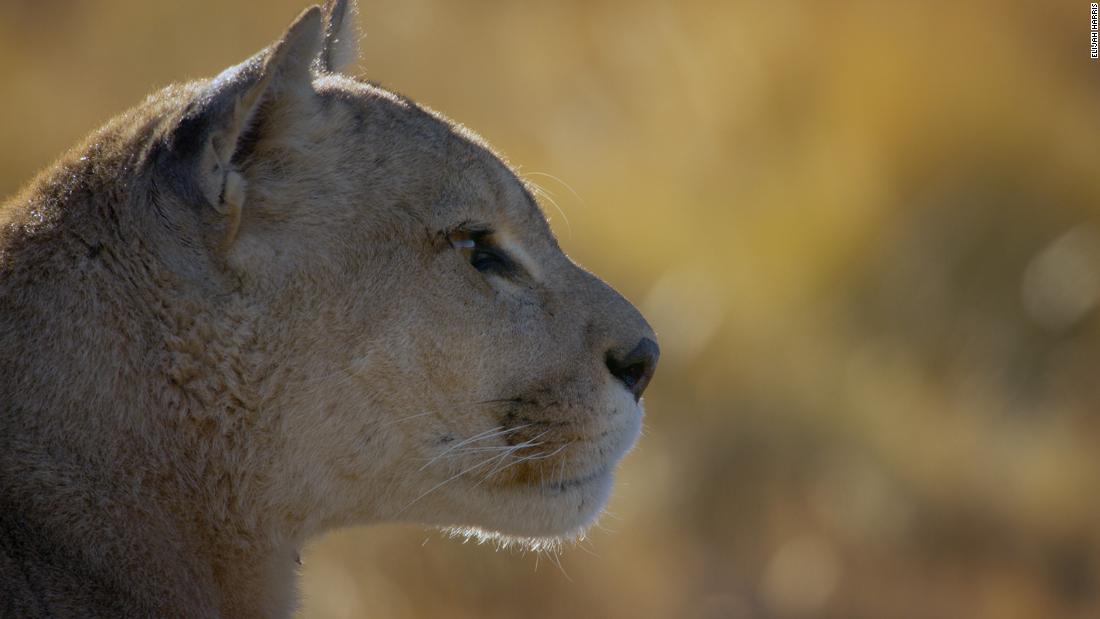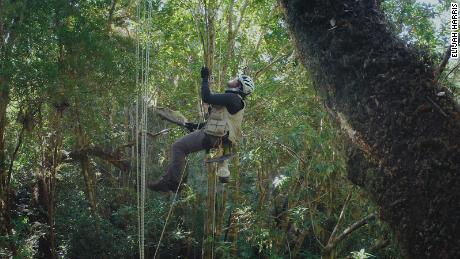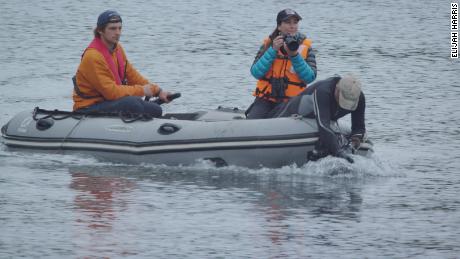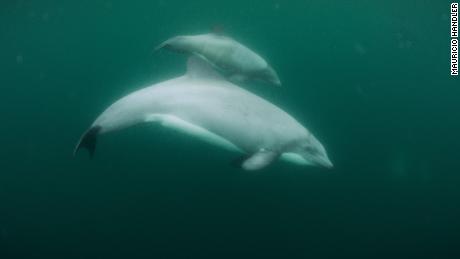
The crew, led by Chilean producer and director René Araneda, had secured a special permit to film pumas off of the park’s main trail. The team was waiting for another puma, affectionately dubbed Supermom, when an unknown male arrived.
Pumas don’t see humans as prey or even a threat — but it was crucial that the crew stood still and didn’t move, no matter how close the curious puma came.
The puma took in the small grouping of the film crew and moved on to the real reason he had arrived: stalking guanacos, a South American relative of the llama.
“You have a script, you have an idea, you have shots that you want to go and do, but at the end of the day, when you work with wildlife, there’s a lot of improvisation on location,” Araneda told CNN. “It depends on what the wildlife allows you to do.”
Close encounters
Araneda remembers using a camcorder when he was 8 years old to capture footage of lizards and snakes, and recruiting his grandfather as a presenter. In addition to being a filmmaker, Araneda became a professional safari field guide when he lived in South Africa. That experience taught him to be respectful of the animals, how to read their natural behavior, and how to do things in a safe way.
Araneda has worked on a number of documentaries over the past 10 years involving Patagonia’s pumas. The cats are protected in Torres del Paine, and even the farmers who once hunted them as livestock predators now focus on protecting them. The male puma that Araneda’s team encountered is likely moving through the park because new biological corridors have opened in recent years, he said.
The park is a place where conservation biologists can study the pumas up close, witnessing their behaviors from 65 feet (20 meters) away in a way that might only be observed in camera traps in the United States.
“They allow you to see their secret lives,” Araneda said.
But at the end of the day, the park is the puma’s territory — a home to wild creatures where humans are the visitors. Araneda hopes that people respect wild places and keep their distance, rather than charging in with selfie sticks.
All of the crews who worked on CNN’s “Patagonia” docuseries secured specific permits from local park services and organizations like Chile’s National Forest Corporation, or CONAF, to film in certain locations as well as specific animals.
Being mindful of the animals and their space, as well as bringing in scientists and experts, allowed the crews to capture incredible moments.
Cinematographer Mauricio Handler dove underwater to film marine otters known as chungungos in Bahía Mansa, a quiet fishing village on the west coast of Chile. The otters were once on the brink of extinction, but they have rebounded in recent years.
What began as a challenging, freezing cold shoot became a “magical moment” for Handler as he captured footage of the otters playing.
Science in real time
Araneda remembers the first time he met biologist Isaí Madriz in 2019. Araneda was scouting locations for filming in South America and the two met by chance “in the middle of nowhere.”
Madriz had been conducting research in the field for weeks when he boarded the boat Araneda was on. They talked for hours, and at the end of their conversation, Araneda knew he wanted to work with Madriz on future projects.
“This is the kind of people that we wanted on the series,” Araneda said. “Passionate people doing things that no one else is doing and actually making a difference.”
“The biggest challenge is to put into everyone’s mind that a little ice dragon is the same or more important than a puma or a whale,” Araneda said. “It has the same value.”
An elusive species on camera
Scientists like Madriz and marine biologist Carla Christie shared valuable expertise and insights with the crews while working on the series.
Christie studies the Chilean dolphin, one of the smallest dolphins in the world that reaches a maximum of 5.2 feet (1.6 meters) in length. These diminutive dolphins, which bear rounded fins and snouts, are endemic to the Chilean coast, but they live in small groups because they are very specific about their habitat, Christie said. Scientists estimate that there are only a few thousand of these marine creatures.
And unlike other dolphins, Chilean dolphins are shy creatures that tend to stay away from boats and people.
The near threatened species is at risk of becoming entangled in fishing nets, habitat encroachment and noise pollution. Christie, the director of resources and public relations for Fundación Oceanósfera in Chile, wants to spread the word about the species because most people don’t even know it exists.
During filming, Christie was on a boat with director Kate Laurie.
“We already knew going into the story that it was probably going to be extremely difficult to find them,” Laurie said. “They’re very elusive.”
The dolphins appeared on the first day of filming as the boat sailed to the sheltered Guaitecas archipelago. The crew was ready with drones and underwater cameras to capture a species rarely seen on film.
Christie was able to see a female dolphin and her calf under the water, as well as mating behaviors using the drone overhead.
“It was an unforgettable experience,” Christie said. “I had the unique and important opportunity to tell the world about this little unknown dolphin from the end of the world.”


